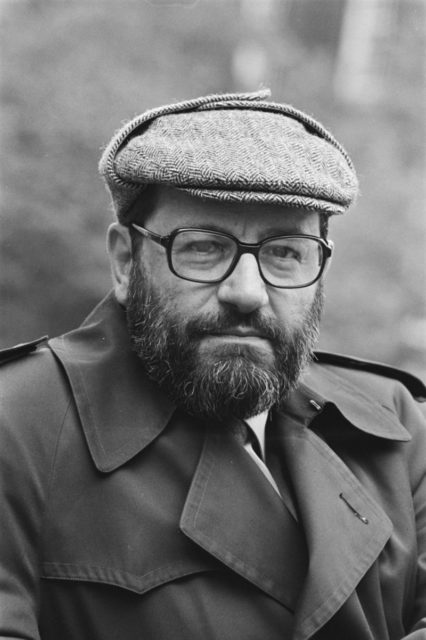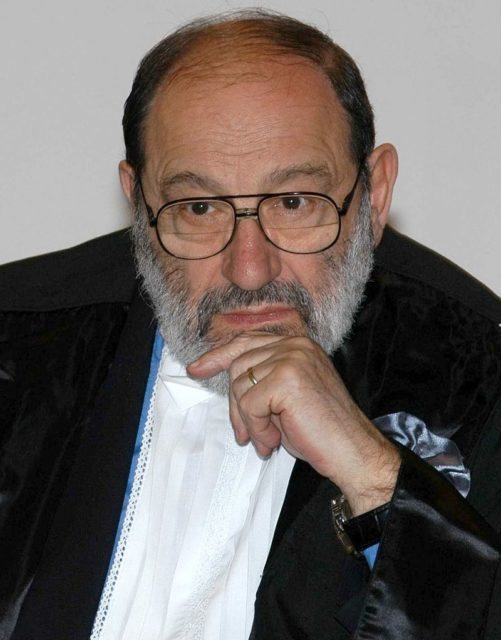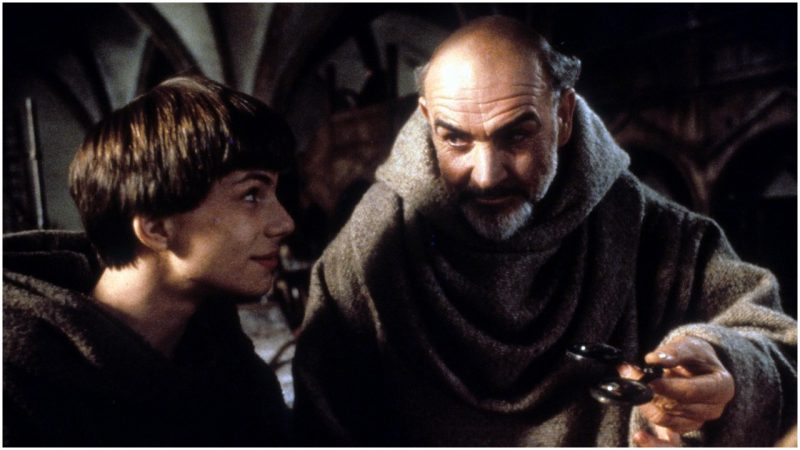Umberto Eco became an international literary celebrity in 1980 when he published his first novel, The Name of the Rose. It was a distinguishing novel, a refreshment for those who enjoy post-modern literature, and it came out of the brains of an academic whose previous best-read work dealt with a theory of semiotics and was mostly reserved for the introvert world of literary scholars. But suddenly Eco created a book of fiction. a multi-layered, hypnotically hyper-textual one that also revolved around medieval theology. Not for a moment did this book fail to capture the imaginations of readers who picked up a copy.
In the following years, Eco received worldwide literary acclaim and established himself as one of the best contemporary writers. He wrote more breath-taking fiction, proving his genius with his next novels, Foucault’s Pendulum and The Island of the Day Before.
Before writing The Name of the Rose, Eco was already a prominent figure in Western circles of philosophy and literary theory. He was famous for his constructive and detailed literary criticism and his work on the theory of semiotics. He was already 48 years old when he penned his novel, and the academic world was astonished as he revealed his talent and skill for fiction.

Several years before writing The Name of the Rose, Eco was approached by one of his friends who worked for a major Italian publisher. She invited him to write a short detective story which would be published in her magazine, but Eco declined the offer and jokingly told her that his detective story would be 500 pages long and it would take place in a medieval monastery.
Since Eco was originally a historian who extensively studied the Middle Ages, the joke soon turned into an actual idea, and Eco began researching historical and philosophical themes that became the basis for the plot of The Name of the Rose. He started working on the book by creating the names of the prominent friars of his fictional monastery.
The novel’s main protagonist, a 14th-century monk known as William of Baskerville, arrives in an Italian monastery with a scholarly purpose–to discuss theology. Soon enough, the monastery becomes a crime scene that concerns multiple deaths of monks. William, along with his novice, are pushed to investigate those deaths and their efforts take readers through the exciting, yet gloomy tone of the narrative.

The novel includes extensive descriptions of monastic life in those days as well as thought-provoking details of philosophical and religious disputes emblematic of the 14th century. What captures the attention of the readers, even though some may lack the background for certain topics, is the evoked atmosphere of fear and the great suspension to find out who is guilty of the murderers.
Eco instills himself as a natural-born mystery writer. He splendidly managed to distort the complex topics of his novel by largely occupying the setting with the murder and numerous other suspects. Many would compare the main protagonist to Sherlock Holmes.

Eco worked on his first book of fiction for two years only, which seems a rather short time considering that the narrative is almost 500 pages long and it incorporates several complex philosophical concepts followed by an impressive amount of intertextual references.
His next novel, the ethereal and cryptic Foucault’s Pendulum, took him eight years to write, but the work paid off as he produced another masterpiece of contemporary fiction. Meanwhile, the film industry picked up his first novel and The Name of the Rose came to the screen in 1986, starring Sean Connery as the protagonist.
Eco died in 2016 after publishing seven novels. In the theoretical texts which he wrote earlier in his career, he frequently emphasized the idea that good authors need to build complete and plausible fictional worlds for their narratives to be autonomous and effective. He proved the validity of this principle in all of his novels by constructing narratives that immerse the readers into strange, yet familiar fictional worlds.
